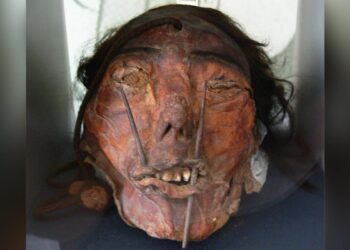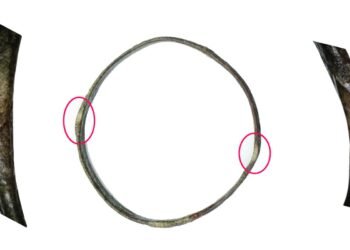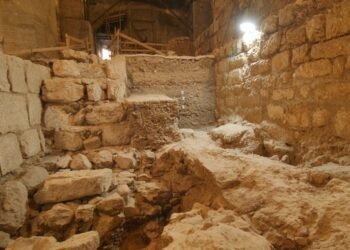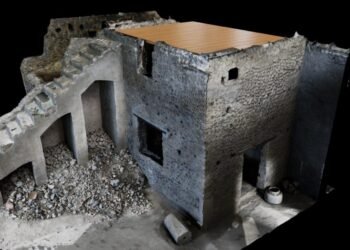Recent archaeological discoveries may lend credence to a Biblical story recounting a divine intervention that saved Jerusalem from an Assyrian invasion approximately 2,700 years ago. Researchers have identified ancient military camps that correspond with the narrative of King Sennacherib’s siege, potentially verifying parts of the Biblical account found in the Hebrew Bible and the Old Testament.

According to the Bible, particularly in 2 Kings 19:35, Isaiah 37:36-38, and 2 Chronicles 32:21, an “angel of the Lord” miraculously struck down 185,000 Assyrian soldiers in one night as they besieged Jerusalem. This divine intervention was in response to prayers from King Hezekiah, who sought protection from Yahweh, the Israelite deity. This event is depicted in various religious texts.
Stephen Compton, an independent scholar specializing in Near Eastern Archaeology, has utilized modern mapping techniques to locate what he believes to be remnants of the Assyrian military base described in these Biblical stories. Compton’s research, detailed in the June issue of the journal Near Eastern Archaeology, reveals significant findings that align with historical accounts of Sennacherib’s campaign.
Compton identified the potential sites by comparing ancient carvings from Sennacherib’s palace in Nineveh, now Mosul in northern Iraq, with early 20th-century aerial photographs. These carvings depict the siege of Lachish, a city 42 miles south of Jerusalem, and include detailed illustrations of an Assyrian military camp.

By cross-referencing these carvings with photographs, Compton located an oval-shaped structure north of Lachish, matching the typical design of Assyrian camps. The site, known as Khirbet al Mudawwara, translates from Arabic to “The ruins of the camp of the invading ruler,” indicating historical recognition of its military significance.
At another site near Jerusalem, identified as Jebel el Mudawwara or Ammunition Hill, Compton discovered similar oval fortifications. Initially believed to be a Roman camp due to its location and design, further analysis showed its layout was consistent with Assyrian military encampments, which were characteristically oval, unlike the rectangular Roman camps.

The Assyrian Empire, which reigned from 1365 to 609 BCE, was known for its extensive military campaigns aimed at expanding its territory. Sennacherib’s siege of Jerusalem in 701 BCE was part of this broader strategy to control routes across the Syrian Desert to the Mediterranean Sea.
During the 1930s, the British established an ammunition storage depot on Ammunition Hill, which was later fortified by the Jordanian army in 1948. The site witnessed intense combat during the Six-Day War in 1967 when Israeli forces captured it. Today, Ammunition Hill serves as a memorial and museum dedicated to this pivotal battle.

While the archaeological evidence discovered by Compton does not confirm the supernatural aspects of the Biblical narrative, it does provide compelling support for the historical presence of Assyrian military forces near Jerusalem during Sennacherib’s reign.
























That was wonderful to hear I love history. Especially when it comes to the Bible.
Fascinating article…so much to discover from the past!
” prayers from King Hezekiah, who sought protection from Yahweh, ” prayers from King Hezekiah, who sought the protection OF Yahweh, not protection from Yahweh. cheers
Amen. Good catch. I knew what it meant but that’s a critical discrepancy. Praise God! This is phenomenal and made me think, “ How many more of these finds to show Yahweh/Yeshua is Who He is?”
When you’re being pompous, please remember to start your next comment with a capital letter. Haa haa. ” not protection from Yahwey. cheers”!!!!!
Capital C in that case then after the full stop. ,
I have a degree in Biblical Areheology and a long time member of B.A.R. I’m looking forward to receiving your news letters.
I never understood why Hollywood didn’t make a movie about this account however there is an hour long dramatization of this account for anyone who wants to see it there’s no added content strictly by the book account at jw.org search Hezekiah Drama in the search bar it’s free there’s also a two part video on King Josiah and the rebuilding of the wall in Jerusalem there’s one on Jonah and an older one on Korah